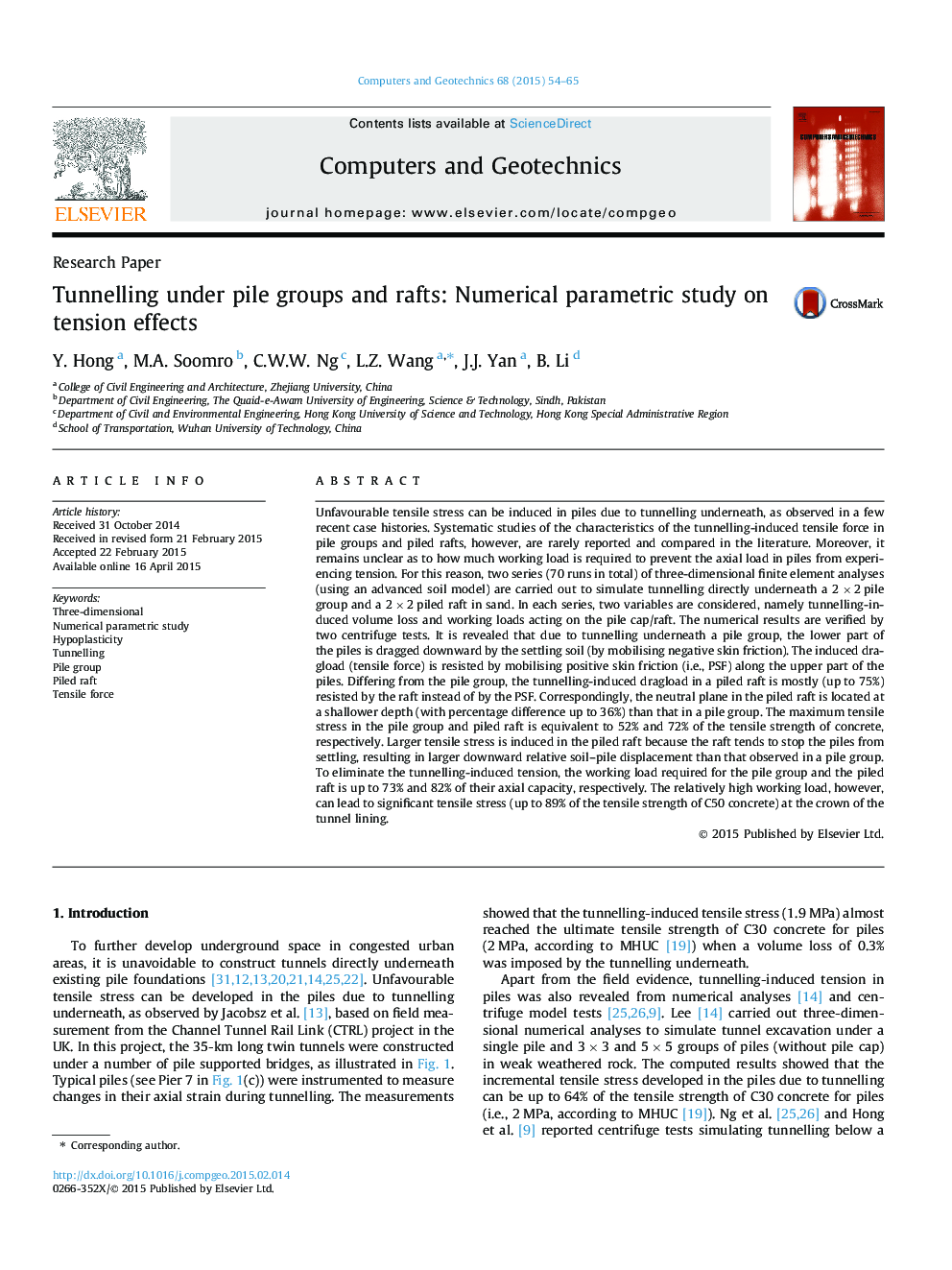| کد مقاله | کد نشریه | سال انتشار | مقاله انگلیسی | نسخه تمام متن |
|---|---|---|---|---|
| 254614 | 503319 | 2015 | 12 صفحه PDF | دانلود رایگان |
Unfavourable tensile stress can be induced in piles due to tunnelling underneath, as observed in a few recent case histories. Systematic studies of the characteristics of the tunnelling-induced tensile force in pile groups and piled rafts, however, are rarely reported and compared in the literature. Moreover, it remains unclear as to how much working load is required to prevent the axial load in piles from experiencing tension. For this reason, two series (70 runs in total) of three-dimensional finite element analyses (using an advanced soil model) are carried out to simulate tunnelling directly underneath a 2 × 2 pile group and a 2 × 2 piled raft in sand. In each series, two variables are considered, namely tunnelling-induced volume loss and working loads acting on the pile cap/raft. The numerical results are verified by two centrifuge tests. It is revealed that due to tunnelling underneath a pile group, the lower part of the piles is dragged downward by the settling soil (by mobilising negative skin friction). The induced dragload (tensile force) is resisted by mobilising positive skin friction (i.e., PSF) along the upper part of the piles. Differing from the pile group, the tunnelling-induced dragload in a piled raft is mostly (up to 75%) resisted by the raft instead of by the PSF. Correspondingly, the neutral plane in the piled raft is located at a shallower depth (with percentage difference up to 36%) than that in a pile group. The maximum tensile stress in the pile group and piled raft is equivalent to 52% and 72% of the tensile strength of concrete, respectively. Larger tensile stress is induced in the piled raft because the raft tends to stop the piles from settling, resulting in larger downward relative soil–pile displacement than that observed in a pile group. To eliminate the tunnelling-induced tension, the working load required for the pile group and the piled raft is up to 73% and 82% of their axial capacity, respectively. The relatively high working load, however, can lead to significant tensile stress (up to 89% of the tensile strength of C50 concrete) at the crown of the tunnel lining.
Journal: Computers and Geotechnics - Volume 68, July 2015, Pages 54–65
